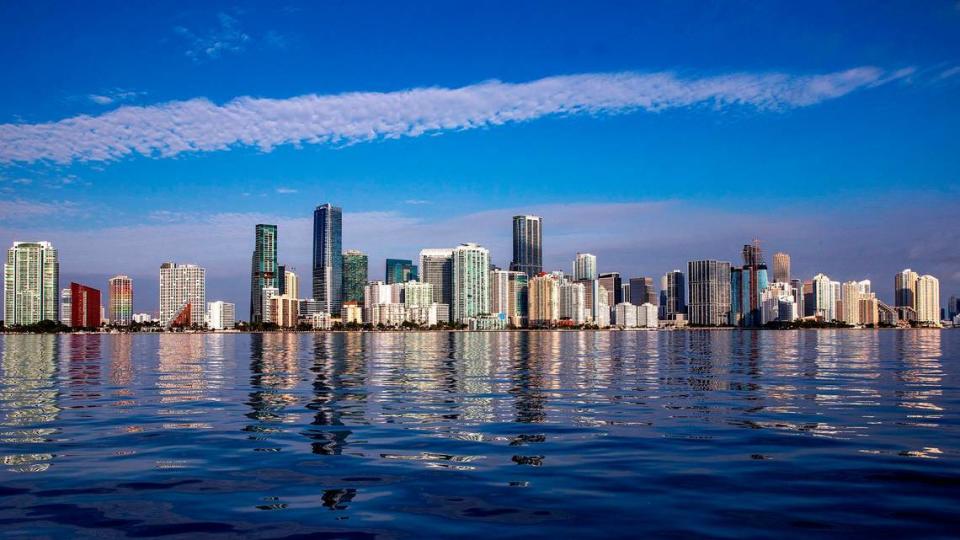14 Florida cities named best places to live in a new U.S. survey. Where does Miami rank?
U.S. News & World Report released its list of the 150 best places to live this week and Florida scored 14 spots on the list, including two in the Top 10: Sarasota and Naples.
The lowest ranked Florida place to live among the 150? Miami, at No. 138, and praised for its “vibrant metro areas” that make Miami “well on its way to becoming one of the largest international business hubs in the world.”
U.S. News also liked our diverse communities. The survey touted Miami for having a population that is “very accepting of nontraditional families” and that we play host to large pride celebrations.
The survey also mentioned Miami-Dade suburbs like Key Biscayne, Coral Gables and Doral as popular locations for raising families and noted that the party-hard crowd still favors Miami Beach.
But Miami was dinged for a few reasons, among them: we had a No. 4 ranking on most expensive places to live. Only San Diego, Los Angeles and Honolulu were more (in that order of most expensive.) And we were only No. 86 among the best places to retire. Lancaster, Pennsylvania, was deemed the best place to retire.

Sarasota was deemed best in Florida for its “distinct vibe,” a vibrant arts scene, “a beachy atmosphere” and burgeoning food culture. The Gulf Coast city, south of Tampa, also ranked high among fastest growing places (No. 2, behind Myrtle Beach, South Carolina) and one of the safest places to live (No. 7.)
Florida did well in the latter safest places to live category, holding four out of five of the Top 5 safest places: Naples (No. 1), Port St. Lucie (No. 2), Fort Myers (No. 3) and Lakeland (No. 5).
Tampa, Daytona Beach and Ocala also made the Top 10, giving Florida all of the 10 safest slots except for Portland, Maine, at No. 4 and Worcester, Massachusetts (No. 8).
The safest and most dangerous lists only included 25 slots. Miami did not rank among the 25 on safest or most dangerous lists. All of Florida escaped the latter list, with Memphis ranked the most dangerous.
Green Bay, Wisconsin, the grand prize choice by U.S. News, earns top slot for its “perfect mix of big-city amenities complemented with a Midwestern, small-town feel,” the magazine said. Also, a thriving entertainment and arts scene, a revitalized downtown, and two college campuses that, taken together, lure an all-ages crowd.
The folks at U.S. News applied a bunch of mathematics and came up with the following results:
Top 10 places to live
1. Green Bay, Wisconsin.
2. Huntsville, Alabama.
3. Raleigh & Durham, North Carolina.
4. Boulder, Colorado.
5. Sarasota.
6. Naples. In February, Scholaroo, a nonprofit educational research company and scholarship website engine, released its list of the best U.S. cities to live in in 2023, and Naples was No. 1.
KNOW MORE: This Florida city was just named best place to live in the U.S. Miami isn’t even close
7. Portland, Maine.
8. Charlotte, North Carolina.
9. Colorado Springs, Colorado.
10. Fayetteville, Arkansas.
How Florida fared

1. Sarasota (No. 5 overall).
2. Naples (No. 6).
3. Melbourne (No. 15).
4. Jacksonville (No. 16).
5. Tampa (No. 24).
6. Pensacola (No. 28).
7. Daytona Beach (No. 49).
8. Orlando (No. 52).
9. Tallahassee (No. 60).
10. Port St. Lucie (No. 63).
11. Ocala (No. 67).
12. Fort Myers (No. 91).
13. Lakeland (No. 105).
14. Miami (No. 138).
How the scores were tallied
To make the top of the list, a place had to have good value, be a desirable place to live, have a strong job market and a high quality of life, according to U.S. News.
▪ Quality of life accounted for 36% of the score, taking into consideration factors including crime rate, air quality, education, a commuter index, healthcare and air quality.
▪ Value accounted for 23% of the score, taking into consideration housing affordability.
▪ Desirability accounted for 22% of the score, which was determined by a poll asking people where they wanted to live.
▪ Job market, at 19%, was also factored.

